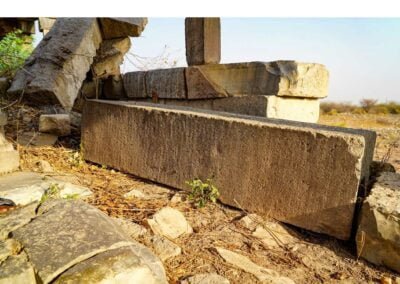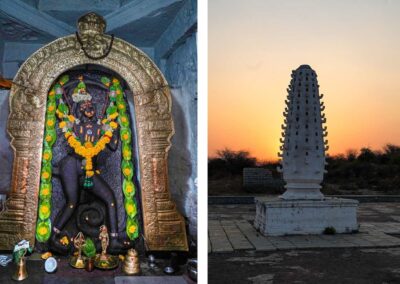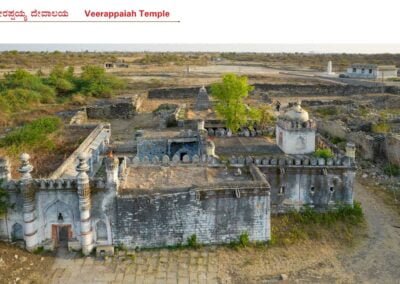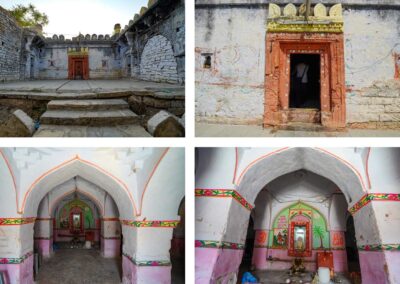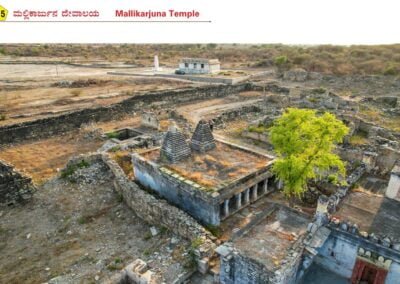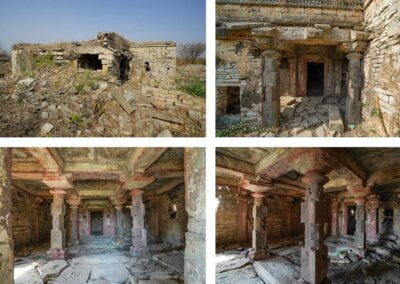A Review Report on
The History and Identity of Nagavi University

Kalaburagi district has a tremendous history with many great things. Sannati in the district was a famous Buddhist centre from the 3rd century BC. One of the 2 major rock edicts of the Maurya emperor Ashoka found in India is in Sannati. Similarly, India’s only inscription with a portrait sculpture of Ashoka with his spouses along with the name ‘Rayo Asoka’ is in the village of Kanaganahalli near Sannati. A Buddhist Stupa was also built here during the 1st century BC to 1st century AD and Kalaburagi district was also a famous important trading centre during that period. It is known from the Kanganahalli Stupa inscriptions that traders came from various parts of India and donated to this Buddhist stupa. By the 1st century AD, the Shvetambara sect, one of the branch of Jainism, had entered Kalaburagi district.
During the reign of the Shatavahanas, Badami Chalukyas, Kalaburgi district was an important administrative unit. After the Rashtrakuta king Mummadi Govinda made Manyakheta his capital, it became an important place of the Rashtrakuta dynasty. The Kalyana Chalukyas who came to power after the Rashtrakutas made Kalaburagi district a cultural and educational hub. The Kalyana Chalukyas and their feudatories, the officials built several educational institutions in Kalaburagi district, among them Nagavi in Chittapur taluk was a world famous university during the 10th-13th century.
Nagavi:
Nagavi is about 3 km from Chittapur Taluk of Kalaburagi District. Although this village is presently famous for the worship of Ellamma, it has a history of more than a thousand years. In the Kalyana Chalukya inscriptions found at Nagavi, it has called as Maha Agrahara Nagavi, Sarva Namasya Agrahara Nagavi, Agrahara Nagavi. Further, an inscription of 1058 AD mentions that Nagavi was Tilakapraya to Kuntalanaadu popularly known as Abhinava Brahmaloka, having well versed Vedic Brahmins. In the inscriptions, this village is called Nagavavi, Nagavapi, Nagai. While the prefix word ‘naga’ refers to Naga worship, the suffix term ‘vapi’ is a Sanskrit word meaning ‘well’. When Srinivas, a scholar visited this place in 1920 for survey, he noticed that there were numerous Naga sculptures. Probably, the name ‘Nagavapi’ may have been derived from the sculptures of Nagas lying near the well of Nagavi since ancient times. Although Nagavi was ruled by various royal families since the first century AD, it was an important agrahara during the Rashtrakuta period. Agraharas, apart from being residential settlements of Brahmins, they were also served as educational centres. During the reign of the Rashtrakuta kings in Nagavi, there were 400 Mahajanas (Vedic Brahmins) and it was a centre of education. An inscritpion of Rashtrakuta dated 969 records the donation of land by Nityavarsha for a satra and vidyakendra belonging to the temple of Ramesvara at Nagavi.
Inscriptions of Nagavi:
Five lengthy inscriptions of the Kalyana Chalukya kings Trailokyamalla Somesvara I, Tribhuvanamalla Vikramaditya, Ahavamalla of the 11th-13th century AD have been found at Nagavi. These inscriptions has mentioned the details such as establishment of Ghatikashatana (Higher education centre) in Nagavi; the name of the persons who built and patron it; the syllabus (Syllabus) taught; the number of students studying there; the number of subject expert faculty etc.; a detailed description of things such as salary allowances given to them, library, librarians (Saraswati Bhandaris) and timekeepers (Ghatikaprharis) to look after and maintain time in the universities etc.
Nagavi as a Centre of Higher Education (Ghatikasthana):
The university at Nagavi is called ‘Ghatikasthana’ in the inscriptions. It is derived from the word ‘ghataka’ which means a clock in the modern sense. These Ghatikas were established in Ghatikasthanas to keep and maintain time for scholarly debates, interpretations, commentators(Vyakyanakarthas) and other debates held in universities. In earlier times, water or sand was filled in an earthen pot with a hole to watch the time. The amount of time of discussions/vyakyanas was determined according to the rate of leakage in the pot (Ghatikas),
Nagavi was an Agrahara with a hundred Mahajanas (Brahmin scholars) during the Rashtrakuta period. In the inscription dated 1058 AD, Kalidasayya, the son of Kannada Sandhivigrahi Madhuvapparasa, the officer of Somesvara I of the Kalyana Chalukya dynasty, converted it as Ghatikasthana (university) and was made to grant land by the Kalyana Chalukya king for its maintenance.
Number of Students:
Education was conducted mainly in three campuses in Nagavi. Around more than 1000 students were studying there. It had students of both undergraduation and postgraduation degrees. Undergraduation (degree) students were called ‘Matada Maani’ (students belonging to Mata), while students studying in Ghatikasthana (University) were called ‘Ghaligeya Maani’ (Students belonging to University).
There are about 400 students in a campus, out of which 100 were studying Shukraneethi, 100 students Vyasaneethi, 100 students Manu dharmashastra and 100 students were studying other subjects. The second campus had 200 students and the third campus had 52 students. Scholars are of the opinion that there may have been three or four separate campuses resembling the famous ancient Nalanda University.
Subjects taught in Nagavi Ghatikasthana:
In ancient Karnataka, Kannada Akshara Shiksha , Bala Shiksha, Karnataka Shiksha, Kannada Alphabet, Language, Grammar were taught as primary education. Since Nagavi was a centre of higher education, Veda, Vedangas, Upanishads, Bhattadarshana (Kumarila Bhatta Darshan), Nyasa (Grammar), Prabhakara Darshana, Shukraneethi and other subjects were teaching there. Philosophical and serious subjects like ethics, dharmashastra, vyasaneeti etc. were taught and explained. There were separate subject experts and commentators for each subject to teach all these subjects. All of them are endowed with land as sustainable allowances.
Library:
Nagavi had a voluminous library of manuscripts (palms) and literary works, with six Saraswati Bhandaris (Librarians) which indicates the importance and scope of the library.
Ghatika (Time) Operators:
In Ghatikasthans, there were mandatory to install ‘ghatikas'(clocks). In several inscriptions of Karnataka, there are references for donation of ‘ghatikas’ to educational centers. Nagavi has a Ghatika Prahari (Announcer of time) and Kapina Ghatiaris (Ghatika maintainers) to keep track of the time in the Ghatika Yantra and they were also endowned land grants on far with the commentators (Vyakyanakarthas) (subject experts).
University Buildings in Nagavi:
Sixty Pillars’ Temple:
Today Nagavi is a city of ancient ruins. However, in addition to all the points mentioned in the inscriptions, some ruins of buildings of the university have remained in Nagavi even today. There is a Tripurusha temple of Brahma, Vishnu and Maheshwara (Now called as 60 Pillars’ temple as there is 60 Pillars’ inside the temple). In the inscriptions it is mentioned as Tripurusha Shale in which all students belonging to various sects were having the provision to learn. Inside of the building there is open courtyard and is designed to be suitable for students to study. If we stand inside the building and look at it, the entire premises can be seen. In the middle of the structure, provision is made for ventilation by open terrace and in case of rain, provision is also made for water flow.
Madhusudana Temple Complex:
At a distance of Ikm away from 60 pillar temple in Nagavi, there is a vast space where the ruins are scattered. It is identified as the temple complex of god Madhusudana. On the basis of two large inscriptions in the dilapidated Madhusudhana temple premises, that complex housed a large and spacious educational institution, where accommodation arrangements were probably made for the students. It is spread over a wide area and parts of the adhishthana of the buildings in front and back side of the Madhusudana temple have been seen till today. Madhusudana temple consists of a sanctum sanctorum, antarala, navaranga, with two entrances between the navaranga and the Nandi mantapa. Now, the sanctum sanctorum has been vandalized by treasure hunters.
Madhusudana temple was built by Kalidasa Dandanayaka named after his father Madhuvarasa. The Ghatikasthana of Madhusudana temple is not only limited to study of Vedas,Vedangas, Meemamse, but also extended its activities as a cultural and social organization. There were Ekadandi, Tridandi, Sanathaka, Brahmachari, Hamsa, Paramahamsa, Anushtanas and Veda, Vedanga studying students. Each class had separate study centres and a separate faculty. There was also an opportunity for fine arts. As part of the exhibition of fine arts in the temple, it is known from the inscriptions that there were Angabhoga, Rangabhoga Sevas (Chamara and Utsava service), Music and other Sevas.
Behind Madhusudana temple, there is an another dilapidated mantapa. It also has a quite spacious courtyard. There are rooms on the right and left side, a large hajara (hall) with stone benches inside it, which is wide enough for study.
Mallikarjuna Temple Complex:
About 300 meters away from the Madhusudana temple complex, there is Mallikarjuna temple complex which consists of twin sanctum sanctorum with Rekha Nagara style shikharas. Next to them, there are several remains of buildings in the form of small rooms. Scholars are of the opinion that these could be student dormitories.
In summery, the Nagavi Ghataikasthana (University) complex is spread over a vast area of more than 400 acres which confirms the fact that there was a huge university complex.
From the aforesaid facts, the points about the system of education in Nagavi can be summarized as follows:-
- Nagavi was a famous centre of learning even during the Rashtrakuta rule.
- Kalidasayya, son of Kannada Sandhivigrahi Madhusudana, the officer of
- Kalyana Chalukya King Trailokyamalla Someshwara I established
- Ghatikasthana (University), a higher education centre in Nagavi by converting the Agrahara.
- More than one thousand students were studying there in about three campuses.
- Each subject had a separate commentators (vyakyanakarthas) who were granted land for their livelihood.
- There was a well-equipped library and six Saraswati Bhandaris (Librarians) were appointed to manage and look after the library.
- There were four Ghatika Praharis (time keepers) to maintain the clocks and tell the time in Ghatikasthana, who were also granted endowments on far with the teaching faculty.
- Buildings, ruins, inscriptions that remains even today in Nagavi confirm the fact that there was a huge university which was equally famous to Nalanda University in ancient India.
In the News

Karnataka Government Plans to Rejuvenate Historic Educational Hub Nagavi
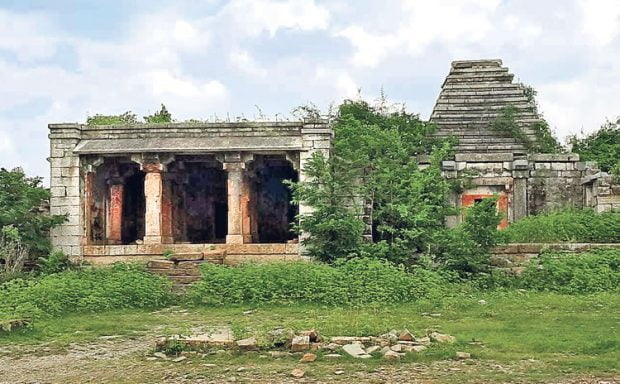
Nagavi University ಸಂರಕ್ಷಣೆಗಾಗಿ ಸಮಿತಿ: ನಳಂದ ವಿವಿಗಿಂತಲೂ ಹಳೆಯದು?

Seven private parties to adopt and restore monuments in Karnataka

Development of ancient monuments, ecotourism takes centre stage

Development of ancient monuments, ecotourism takes centre stage

Major focus is on improving basic facilities in tourist destinations in Karnataka, says Tourism Minister H. K. Patil





